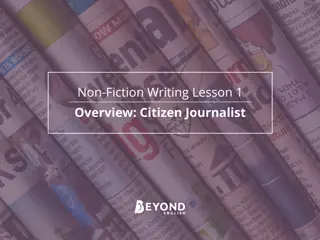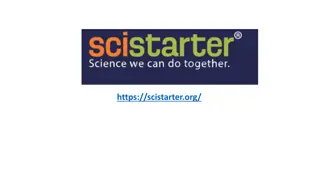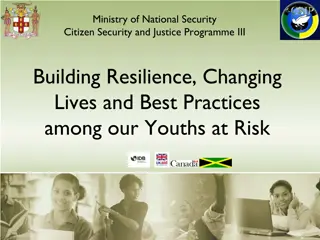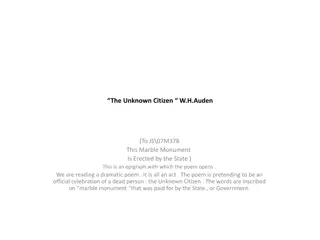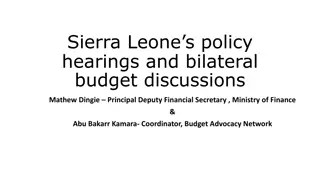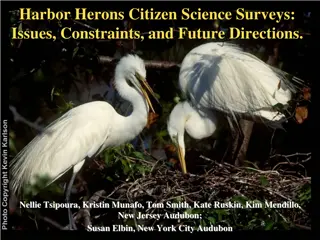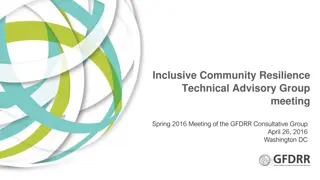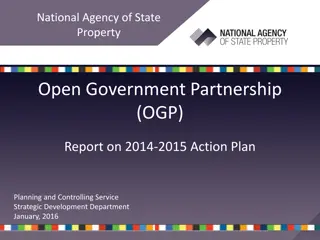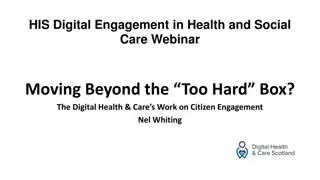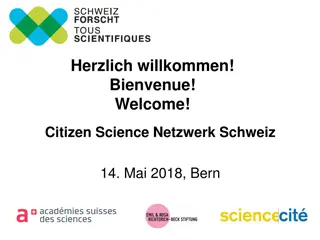Enhancing Citizen Engagement for Public Interest
Explore the paradigm shift towards citizen engagement that bridges democracy and public interest. Understand the differences between public and private organizations in serving societal needs. Learn strategic steps for survey research and investment decisions, focusing on building trust and prioritizing community well-being. Define the public interest through a balance of self-interest and community welfare.
Download Presentation

Please find below an Image/Link to download the presentation.
The content on the website is provided AS IS for your information and personal use only. It may not be sold, licensed, or shared on other websites without obtaining consent from the author.If you encounter any issues during the download, it is possible that the publisher has removed the file from their server.
You are allowed to download the files provided on this website for personal or commercial use, subject to the condition that they are used lawfully. All files are the property of their respective owners.
The content on the website is provided AS IS for your information and personal use only. It may not be sold, licensed, or shared on other websites without obtaining consent from the author.
E N D
Presentation Transcript
Building Societal Capacity: Citizen Engagement Driven by the Public Interest and Demonstrated Trust Mark A. Glaser and Misty R. Bruckner
Foundation Differences Public versus Private For-Profit Agencies Private For-Profit Organizations respond to narrow bands of self-interest as defined by customers and markets Ideally, Public Organizations act/invest in ways that advance the public interest and democracy Survey research and citizen engagement processes should reflect these differences Paradigm Shift: Citizen engagement that promotes convergence between democracy and the public interest
Paradigm Shift in the Logic of Survey Research Strategic Investment Decisions Step 1. Establish need to Change: Global economy, growing fiscal challenges, and pluralism Step 2. Frame of Reference -The Public Interest/Community Well-Being: Reflect on basic values and societal responsibilities Step 3. Public Support for Investment: Economic Development, Community Development, Transportation, and Water
Step 4. Demonstrated Trust: From Spending to Investment -Describe your approval rating for how your money has been invested (Strongly Disapprove, Disapprove, Somewhat Disapprove, Somewhat Approve, Approve, Strongly Approve) -The community is a better place because we invested in .(Definitely False, Probably False, Probably True, Definitely True)
Step 5. Investment Priorities and Opportunity Costs: Recommended change in the level of investment.. (Much Less, Less, No Change, More, Much More) Step 6. Priorities and Willingness to Pay: I m willing to pay increased taxes or fees to pay for investment (Definitely Not Willing to Pay, Probably Not Willing to Pay, probably Willing to Pay, Definitely Willing to Pay)
Defining the Public Interest Index Component 1: Balancing Self-Interest & Community Well-Being I am willing to put community interests above personal interests (71.7%) Most people are willing to put community interests above personal interest (28.2%)
Defining the Public Interest Index Component 2: Balancing Concerns of Current & Future Generations I am willing to make personal sacrifices for the well-being of future generations (85.7%) Most people are willing to make personal sacrifices for the well-being of future generations (41.7%) Our community should strive to balance the needs and concerns of current and future generations (97.0%)
Defining the Public Interest Index Component 3: Balancing Concerns of Advantaged & Disadvantaged Our community should strive to create employment opportunity for all individuals that are willing to work (95.3%)
Willingness to Pay I m willing to pay increased taxes or fees to pay for investment to create a reliable source of water that will meet the future water needs of the community 85.3% Low Public Interest Index Score: 61.8% High Public Interest Index Score: 90.4% Largest percentage difference meet the needs of those who are homeless 63.4% Low Public Interest Index Score: 24.6% High Public Interest Index Score: 87.3%
Summary of Understanding Zero Order Correlation Coefficients (1) (2) (3) (4) 1) Public Interest - 2) Sociogeographic Community .29 3) Demonstrated Trust .46 .23 - 4) Willingness to Pay .57 .17 .58 - - Multiple Regression: Enter R2 = .45 Predictors Public Interest Demonstrated Trust Sociogeographic Community Willingness to Pay Taxes (Dependent Variable)
Phases of Engagement Phase 1: Engage stakeholders in development of issues Phase 2: Conduct survey instrument Phase 3: Create citizen-government conversations post-survey
Components of Engagement Component 1: Deliberate and expansive invitation of participation Component 2: Education and Media Relations Component 3: Dimensions of Public Interest Component 4: Interactive Process
Phase 1: Development Phase Component 1: Invitation --Informed stakeholders: 25 interviews --Unusual suspects: 500 randomly selected participants Component 2: Education and Media Relations -- Briefing sheets/presentations/media invite Component 3: Public Interest --Introduction of concepts; explanation of purpose Component 4: Interactive Process --Experts perspective --Citizen perspective
Phase 2: Survey Instrument Component 1: Invitation --Inform key community leadership --Over sample (25,000) surveys Component 2: Education and Media Relations -- Comprehensive media coverage on issues Component 3: Public Interest --Components of the survey Component 4: Interactive Process --Survey format
Phase 3: Conversations Component 1: Invitation --Initial announcement with community leadership --Process of inviting yourself more than 100 meetings Component 2: Education and Media Relations -- Deliberate effort to engage and involve Component 3: Public Interest --Review of findings; framing of conversation Component 4: Interactive Process --Experts perspective --Citizen perspective










